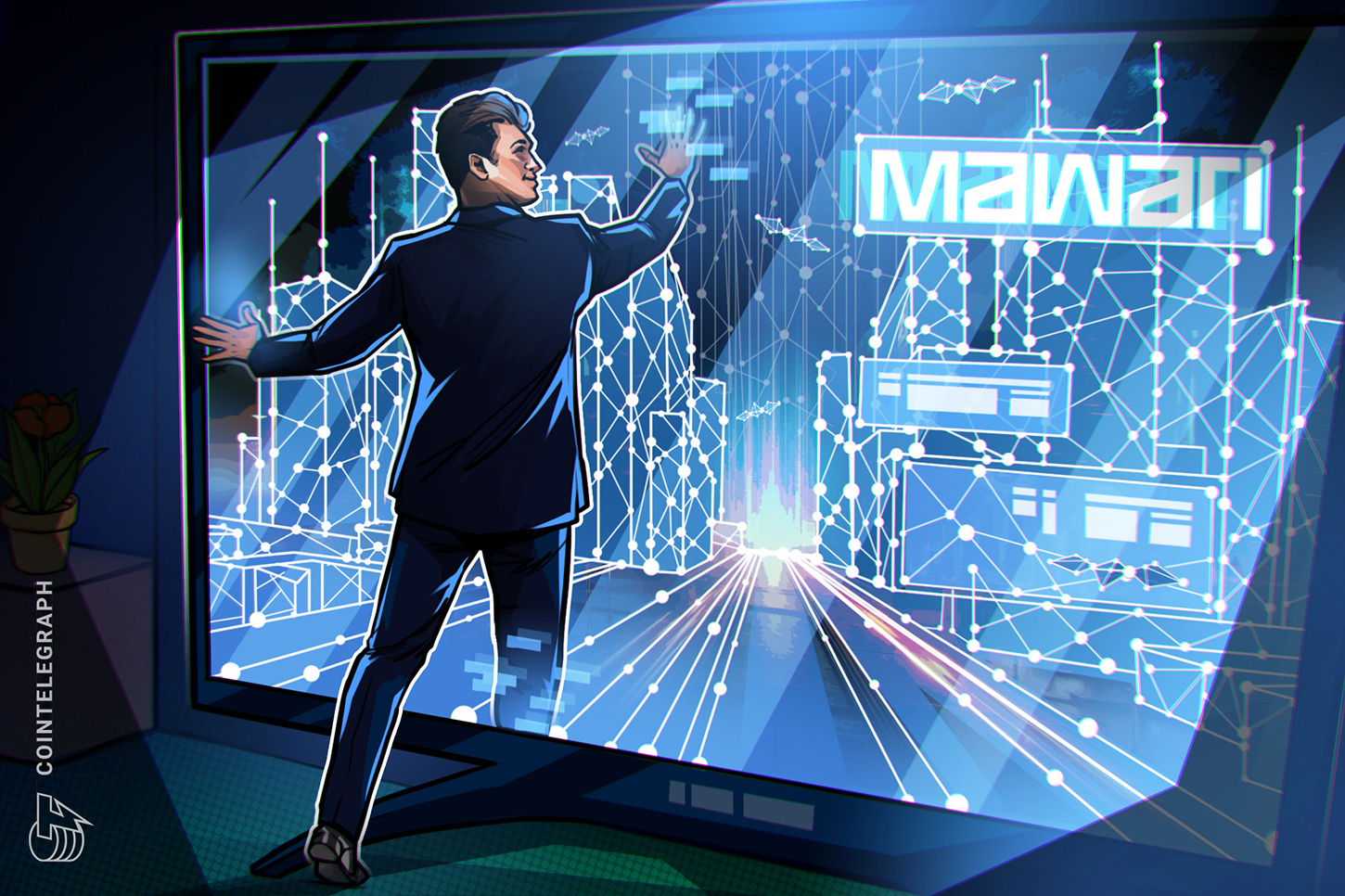Sponsored Content
Forget typing on a keyboard or tapping a screen, the next interface is presence itself. As extended reality (XR) and real-time AI agents redefine how we engage with technology, interactions are moving beyond screens into lived, spatial environments.
While the front-end experience may feel like science fiction, the back end exposes a critical bottleneck. Streaming 3D environments and delivering responsive immersion demand things the traditional internet lacks: ultra-low latency and a globally distributed compute layer.
Traditional cloud infrastructure and content delivery networks (CDNs) remain centralized and poorly suited to meet these demands. Presence doesn’t tolerate lag, and even momentary delays can disrupt the experience entirely. To make real-time spatial computing viable at scale, the underlying infrastructure must be faster, more adaptive and built for immersive workloads.
This is where decentralized physical infrastructure networks (DePIN) come into play. By distributing workloads across community-operated nodes, Web3-native infrastructure offers a scalable foundation that keeps pace with front-end innovation. Among the projects building such infrastructure from the ground up is Mawari Network, a spatial computing platform architected with the decentralized paradigm in mind.
Behind the infrastructure layer
Mawari aims to power real-time streaming of immersive AI-driven experiences globally with close to zero latency. With deep roots in XR, the company has delivered over 50 commercial deployments for clients including Netflix, BMW, T-Mobile and Japan-based telecommunications company KDDI.
📽️ WATCH: “We want to make XR accessible to everyone.”
— Cointelegraph (@Cointelegraph) June 4, 2025
Mawari debuts DIO this June — a decentralized delivery network for real-time 3D & AI content.
[Brought to you by @mawariXR] pic.twitter.com/l2OewX2pmX
Rather than relying on heavily centralized traditional systems, Mawari’s infrastructure is designed to scale horizontally through community-driven participation.
The platform separates compute-intensive processing from lightweight delivery and coordination tasks. High-performance GPU nodes handle real-time rendering of 3D and AI-generated content in the cloud, while a decentralized network of nodes manages distribution, performance monitoring and responsiveness at the edge. This division of labor enables the network to scale efficiently while minimizing latency, making it possible to deliver complex XR and AI experiences to devices that would otherwise be unable to render them locally.
For users, it means immersive experiences that load faster, run smoother and feel more natural, without requiring high-end devices or cumbersome setup processes.
DIO: A new model for infrastructure participation
To make real-time immersive experiences globally accessible, Mawari offers a decentralized infrastructure offering (DIO), a Web3 native model that builds spatial computing infrastructure through community participation.
At the center of Mawari’s DIO model are Guardian Nodes, lightweight computing units that play a vital role in maintaining network integrity. These nodes are not tasked with rendering or streaming, which are handled by high-performance GPU-based nodes. Instead, Guardian Nodes monitor overall network performance and ensure the reliability of other components.
Participation is designed to be broadly accessible. Guardian Nodes require only minimal hardware (1GHz CPU, 8GB RAM and 2GB SSD) and can be run directly by users or delegated to verified infrastructure partners. The flexibility opens participation to a broad base of users, from tech-savvy operators to supporters who prefer infrastructure-as-a-service models.
The DIO framework introduces a performance-based reward structure rather than promoting speculative hype. Operators earn up to 20% of total Mawari Network revenue, with compensation tied to actual usage and contribution instead of token fluctuations.
To support this wide accessibility, Mawari is launching a large-scale license program. 300,000 Guardian Node licenses will be available across three tiers: 165,000 under the Visionary plan, 60,000 under the Balance tier and 75,000 as part of the Catalyst offering.
Each license costs $333, payable in USDC or USDT on the Arbitrum network. Operators earn based on network performance, and licenses become transferable one year after launch, adding flexibility for future participants.
Mawari has also introduced an early operator incentive program to further incentivize early contributors. The initiative allocates 11% of the total token supply to Guardian Node operators over the first three years of network activity. Rewards are fixed per license and independent of overall license sales, ensuring fair and predictable participation terms.
Real usage, real rewards, real utility
Unlike conventional token sales, which often prioritize early speculation over long-term viability, the DIO model is grounded in real-world application. It focuses on contribution and tangible economic activity.
Beyond being network contributors, Guardian Node operators are active infrastructure partners. They help ensure that immersive content is delivered seamlessly, and in return, they receive direct exposure to the network’s growth. As streaming demand grows, so does the volume of revenue-sharing rewards and the importance of maintaining network performance.
DIO participants also gain access to a range of long-term benefits and privileges within the network. These include early access to beta programs from emerging XR applications and startups, as well as opportunities to receive airdrops and rewards from third-party projects building on Mawari’s infrastructure. Participants may also be prioritized for roles in future decentralized services and regional expansions.
Ultimately, Guardian Node operators take an active role in shaping the evolution of next-generation internet infrastructure. Instead of leaving infrastructure in the hands of corporations alone, Mawari’s DIO model empowers users to build and maintain the very networks they rely on.
Infrastructure for the experiential web
Institutional interest signals growing confidence in Mawari’s long-term thesis. The company has raised $10.8 million in a strategic funding round led by Anfield LTD, Borderless Capital and 1kx, bringing the total amount raised to $17.3 million. With a projected $5 million annual recurring revenue and a proven track record with over 50,000 hours of immersive content streamed in 2024, Mawari enters the next phase with operational credibility and community momentum.
Looking ahead, Mawari plans to expand its decentralized infrastructure globally through the DIO initiative, bringing Guardian Nodes online across strategic regions. The roadmap includes onboarding third-party XR platforms, forming new regional partnerships and building tokenized incentive structures that align long-term network health with user participation.
A surge of community momentum
In its first week, the Mawari Portal, a community-powered initiative to onboard and engage participants, surpassed one million users. The scale and speed of this engagement reflect strong traction as Mawari prepares for its upcoming decentralized infrastructure offering.
1 Million+ have entered the Mawari Portal.
— Mawari (@mawariXR) July 4, 2025
The spatial internet is no longer a frontier we anticipate, it is the reality we are now building together.
You can still keep stacking the XR Credits for [REDACTED] 😉https://t.co/MJU9Ud1GLN pic.twitter.com/CVJcMZXPZg
With the ecosystem continuing to expand, the Portal remains an open gateway for participants to engage, explore new initiatives, and take an active role in shaping the future of real-time immersive experiences.
As decentralized systems gain traction and immersive technologies evolve, spatial computing and real-time AI are poised to become part of everyday life. Mawari’s architecture is designed to meet this reality head-on, laying the groundwork for an internet shaped not by screens, but by presence.
Disclaimer. Cointelegraph does not endorse any content or product on this page. While we aim at providing you with all important information that we could obtain in this sponsored article, readers should do their own research before taking any actions related to the company and carry full responsibility for their decisions, nor can this article be considered as investment advice.


